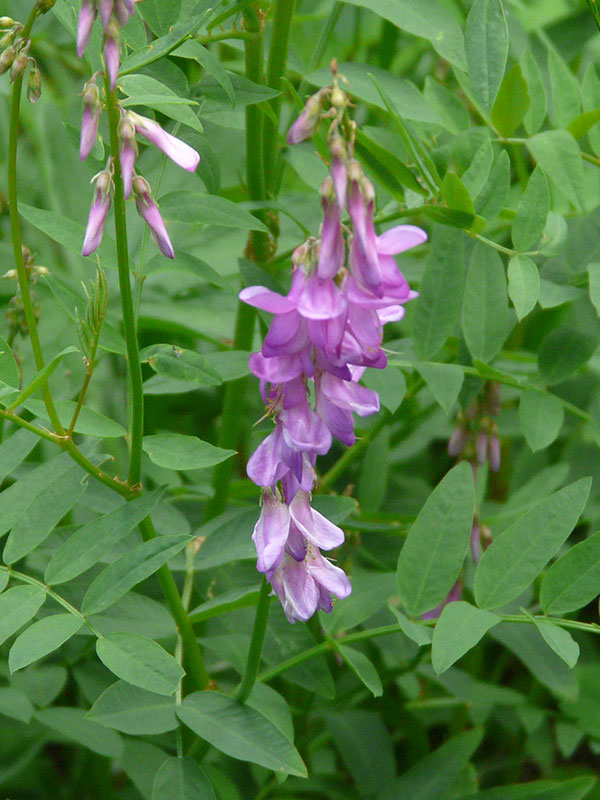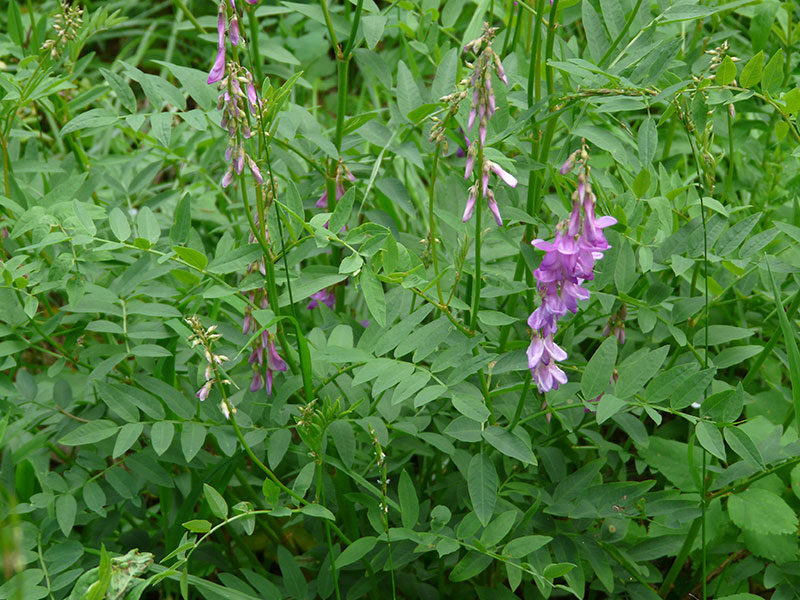Hedysarum occidentale / western sweetvetch
- tall legume with hot pink flowers
- inflorescence several inches long; up to 80 flowers
- pinnately compound leaves with 9-21, inch-long leaflets
- higher elevations on drier, more rocky soils
Also known as: liquorice root, western chainpod
As you head up the trails from the Valley to higher climes, the soils will get generally drier and more rocky, forests will give way to meadows and open woodlands. It is there that you might be lucky enough to find this plant.
What you will undoubtedly notice first is the inflorescence… a long cluster of pendant, hot pink flowers. Indeed the inflorescence is several inches long with as many as 80 flowers per stalk. Each flower is recognizably a legume with 5 petals, two of which, the banner and keel, are larger than the others. The flowers also stand out because they are on a leafless stem. If everything else seems right except the color – white? – it is possible that you have found an albino.
The plant itself is a perennial with several stems arising from a caudex and a deep rootstock. It may grow to 3 feet tall and is sometimes referred to as a “robust shrub”. The leaves are large but pinnately compound. The leaves are alternately arranged but the leaflets are opposite each other. There are from 9 to 21 leaflets per leaf, evenly and widely spaced. The individual leaflets are elongated ovals and about an inch long. Each leaflet may terminate in a tiny spike, or in a small notch, or not. Go figure. At the base of each leaflet is a pair of brown stipules.
The truly distinguishing feature of the genus is the fruit. These are like large bean pods, but strongly flattened and constricted between the seeds. The fruits break into 1-seed sections when mature and open crosswise rather than lengthwise like most other members of the Fabaceae.
My favorite description of the plant from the web is that it has “myriads of flowers followed by myriads of cute seed chains.”
| Color | |
|---|---|
| Family | |
| Blossom size | |
| Inflorescence size | |
| Inflorescence type | |
| When? | |
| Where? | bare rocks, Darby wind cave, higher altitudes, meadows, rocky areas |


